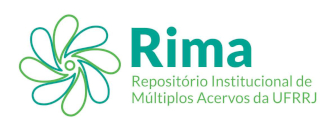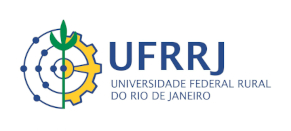Please use this identifier to cite or link to this item:
https://rima.ufrrj.br/jspui/handle/20.500.14407/20642| Tipo do documento: | Tese |
| Title: | Desenvolvimento de um organomineral regenerador de solo com tecnologia de microcarbonos e liberação lenta de K |
| Other Titles: | Development of a soil regenerating organomineral with microcarbon technology and slow release of K |
| Authors: | Torchia, Danielle França de Oliveira |
| Orientador(a): | Calderín García, Andrés |
| Primeiro coorientador: | Zonta, Everaldo |
| Primeiro membro da banca: | Calderín García, Andrés |
| Segundo membro da banca: | Berbara, Ricardo Luiz Louro |
| Terceiro membro da banca: | Rezende, Fabiana Abreu de |
| Quarto membro da banca: | Magalhães, Marcio Osvaldo Lima |
| Quinto membro da banca: | Tavares, Orlando Carlos Huertas |
| Keywords: | Acúmulo de carbono;Fertilizantes potássicos;Liberação lenta;Regeneração de solo;Carbon accumulation;Potassium fertilizers;Slow release;Soil regeneration |
| Área(s) do CNPq: | Agronomia |
| Idioma: | por |
| Issue Date: | 27-Feb-2023 |
| Publisher: | Universidade Federal Rural do Rio de Janeiro |
| Sigla da instituição: | UFRRJ |
| Departamento: | Instituto de Agronomia |
| Programa: | Programa de Pós-Graduação em Agronomia - Ciência do Solo |
| Citation: | TORCHIA, Danielle França de Oliveira. Desenvolvimento de um organomineral regenerador de solo com tecnologia de microcarbonos e liberação lenta de K. 2023. 161 f. Tese (Doutorado em Agronomia - Ciência do Solo) - Instituto de Agronomia, Universidade Federal Rural do Rio de Janeiro, Seropédica, 2023. |
| Abstract: | A agricultura desenvolvida em solos frágeis, como no estado do RJ, precisa de tecnologias que promovam a regeneração do solo e ao mesmo tempo disponibilize os nutrientes necessários para desenvolvimento vegetal. Neste contexto, o objetivo do presente trabalho é gerar as bases tecnológicas para a elaboração de organominerais inteligentes baseados em tecnologia multi- target (multipropósito) e de distribuição baseada em micro-C (micro-carbonos) direcionada para as especificações dos solos frágeis e pobres, compostos por C-recalcitrante (Biochar) para o aumento da matéria orgânica, C-húmico (SH) para o estímulo do sistema radicular e liberação lenta de potássio, em consonância com o modelo da FAO “Climate Smart Agriculture”. No Capítulo I foi realizada a caracterização de Biochars artesanais produzidos na região através de técnicas químicas e estruturais. As características químicas e estruturais tiveram variação entre os Biochars. Os teores de nutrientes dos Biochars não foram suficientes a ponto de mostrar potencial de suprir o desenvolvimento vegetal. Dentre os Biochars artesanais analisados, o B1 apresentou uma estrutura mais aromática, portanto, com maior recalcitrância. No Capítulo II foram testados os Biochars artesanais no cultivo de arroz para avaliar a influência na germinação e no crescimento em material do horizonte superficial de solo Planossolo de textura arenosa. A aplicação de todos os Biochars não atendeu as exigências das plantas de arroz, sendo necessária suplementação aos 20 dias. Essa exigência foi notada na análise de fluorescência transiente da clorofila a aos 26 dias. No Capítulo III foram produzidos e caracterizados Biochars de maravalha de eucalipto, cavaco de eucalipto e lodo de esgoto, em três temperaturas, 300, 400 e 500 °C. Os resultados mostram que o aumento da temperatura de pirólise afeta o rendimento de Biochar, a quantidade de compostos voláteis, cinzas e carbono fixo. A estrutura do Biochar é substancialmente modificada de uma característica alifática para uma estrutura mais aromática e mais hidrofóbica, principalmente com o aumento da temperatura de pirólise. No Capítulo IV os Biochars produzidos foram utilizados como base para o desenvolvimento de um organomineral que atue na regeneração de solos arenosos do estado do Rio de Janeiro e também promova a liberação lenta de K ao solo. Os ORSK-L possuem maiores concentrações de macro e micronutrientes, os ORSK apresentaram valores significativos de COT. Os ORSK estão dentro dos padrões de garantia de fertilizante organomineral potássico determinados pelo MAPA. ORSK-M500, ORSK-C500 e ORSK-L500 apresentaram estrutura mais aromática com predomínio de estruturas CAr-H,R e CAr-O, enquanto ORSK-M300, ORSK-C300 e ORSK- L300 estruturas mais alifáticas e maior presença de grupos carboxílicos. Mostraram tamanho de partículas e dispersão diferentes, sendo ORSK-L500 o de maior diâmetro de partículas, maior dureza e menor quantidade de partículas em suspensão, entretanto mostrou dissolução inicial rápida, aumentando a condutividade elétrica da solução. No Capítulo V foram aplicados os ORSK produzidos e caracterizados no capítulo anterior, visando verificar a eficiência das bases utilizadas (Biochar e AH) na regeneração de solo arenoso e na disponibilidade mais eficaz de potássio para o cultivo de plantas de arroz. Cada ORSK obtido de Biochar de diferentes biomassas produziu efeitos também diferentes quando aplicados ao solo no cultivo de arroz. Resultados mostram que as bases utilizadas para a construção desse organominerais possuem efeitos potenciais para uso tanto na regeneração do solo, quanto na liberação mais lenta de K. |
| Abstract: | Agriculture developed in fragile soils, as in the state of RJ, needs technologies that promote soil regeneration and at the same time provide the necessary nutrients for plant development. In this context, the objective of this work is to generate the technological bases for the elaboration of intelligent organominerals based on multi-target technology (multipurpose) and distribution based on micro-C (micro-carbons) directed to the specifications of fragile and poor soils, composed of recalcitrant-C (Biochar) to increase organic matter, humic-C (SH) to stimulate the root system and slow release of potassium, in line with the FAO model “Climate Smart Agriculture”. In Chapter I, the characterization of artisanal Biochars produced in the region through chemical and structural techniques was carried out. Chemical and structural characteristics varied between Biochars. The nutrient contents of the Biochars were not enough to show potential to support plant development. Among the analyzed artisanal Biochars, B1 presented a more aromatic structure, therefore, with greater recalcitrance. In Chapter II, artisanal Biochars were tested in rice cultivation to evaluate the influence on germination and growth in material from the surface horizon of a Planossolo with sandy texture. The application of all Biochars was not sufficient for the requirements of the rice plants, requiring supplementation at 20 days. This requirement was noted in the transient fluorescence analysis of chlorophyll a at 26 days. In Chapter III, Biochars of eucalyptus shavings, eucalyptus chips and sewage sludge were produced and characterized at three temperatures, 300, 400 and 500 °C. The results show that increasing the pyrolysis temperature affects the Biochar yield, the amount of volatile compounds, ash and fixed carbon. The Biochar structure is substantially modified from an aliphatic characteristic to a more aromatic and hydrophobic structure, mainly with the increase of the pyrolysis temperature. In Chapter IV, the produced Biochars were used as a basis for the development of an organomineral that acts in the regeneration of sandy soils in the state of Rio de Janeiro and also promotes the slow release of K to the soil. The ORSK-L have higher concentrations of macro and micronutrients, the ORSK showed significant TOC values. The ORSK are within the potassic organomineral fertilizer guarantee standards determined by MAPA. ORSK-M500, ORSK-C500 and ORSK-L500 showed a more aromatic structure with a predominance of CAR-H,R and CAR-O structures, while ORSK-M300, ORSK-C300 and ORSK-L300 structures were more aliphatic and with a greater presence of groups carboxylic. They showed different particle size and dispersion, with ORSK-L500 having the largest particle diameter, the highest hardness and the lowest amount of particles in suspension, however it showed rapid initial dissolution, increasing the electrical conductivity of the solution. In Chapter V, apply the ORSK produced and characterized in the previous chapter, aiming to verify the efficiency of the bases used (Biochar and AH) in the regeneration of sandy soil and in the more effective availability of potassium for the cultivation of rice plants. Each ORSK obtained from Biochar of different biomasses also produced different effects when applied to the soil in rice cultivation. Results show that the bases used for the construction of these organominerals have potential effects to be used both in soil regeneration and in the slower release of K. |
| URI: | https://rima.ufrrj.br/jspui/handle/20.500.14407/20642 |
| Appears in Collections: | Doutorado em Agronomia - Ciência do Solo |
Se for cadastrado no RIMA, poderá receber informações por email.
Se ainda não tem uma conta, cadastre-se aqui!
Files in This Item:
| File | Description | Size | Format | |
|---|---|---|---|---|
| 2023 - Danielle França de Oliveira Torchia.pdf | 13.25 MB | Adobe PDF |  View/Open |
Items in DSpace are protected by copyright, with all rights reserved, unless otherwise indicated.

